My renewed interest in chess has not just extended to tournament play. I am composing chess problems again as well. Here's one I came up with recently, and which will eventually be published in The Problemist magazine. In the position below, white is looking for selfmate in thirteen moves:
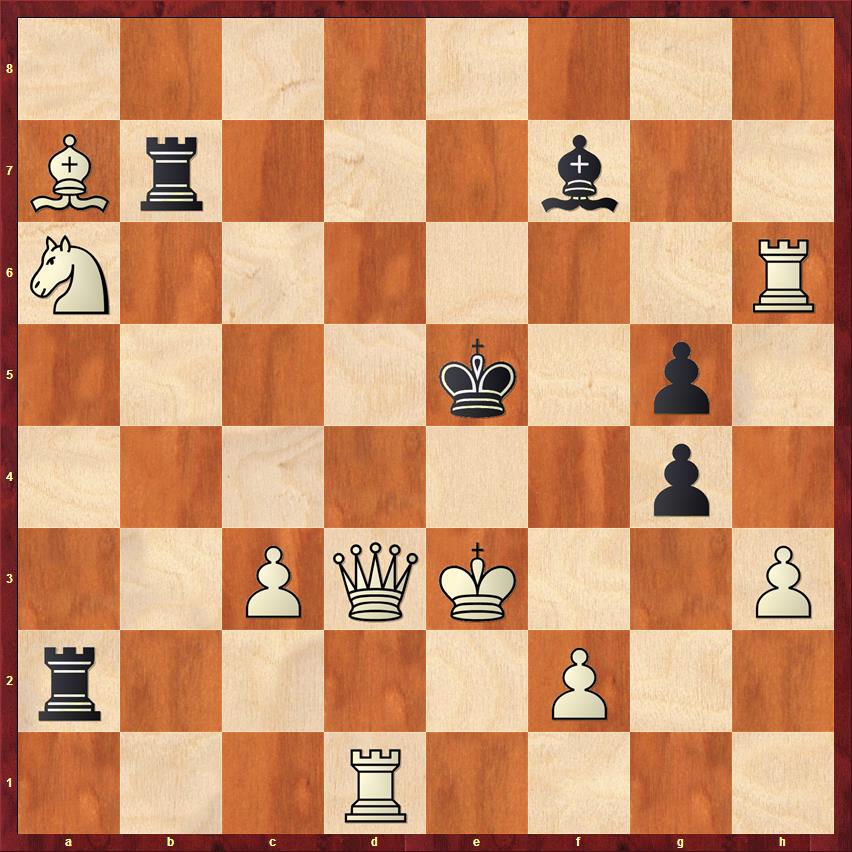
Recall that white is always moving up the board and black is always moving down. Vertical files are labeled a--h from left to right, while horizontal ranks are numbered a--8 from bottom to top. So, in the diagram, the white king is on e3 and the black king is on e5.
Also recall that in a selfmate, white is trying to force black to give checkmate. Black, for his part, will do anything he can to avoid giving mate. It's a complete inversion of normal chess logic!
Now, down to business. Way back when I started this series, I introduced the idea of a logical problem. This refers to a problem with a the following general structure. White has an idea he wants to execute. This idea is referred to as his “main plan.” However, if he executes his plan immediately, then black has a defense that foils the plan. So white must execute a “foreplan” that neutralizes the defense. This allows him to then execute the main plan. It is aesthetically important that the sole purpose of the foreplan be to neutralize the defense that foils the main plan. Problemists refer to this as purity of aim.
In the present problem, white will need three foreplans before executing his main plan.
White would love to play 1. f4+ and have black reply with 1. ... gxf4 mate.
But if he does this immediately, then black has the en passant capture 1. ... gxf3. Now white is out of luck. So, before pushing his f-pawn, white has to neutralize the en passant defense.
It looks like he might have an easy way of doing that. He can play 1. Qd4+ Kf5 2. Qxg4+ Ke5, leading to this position:
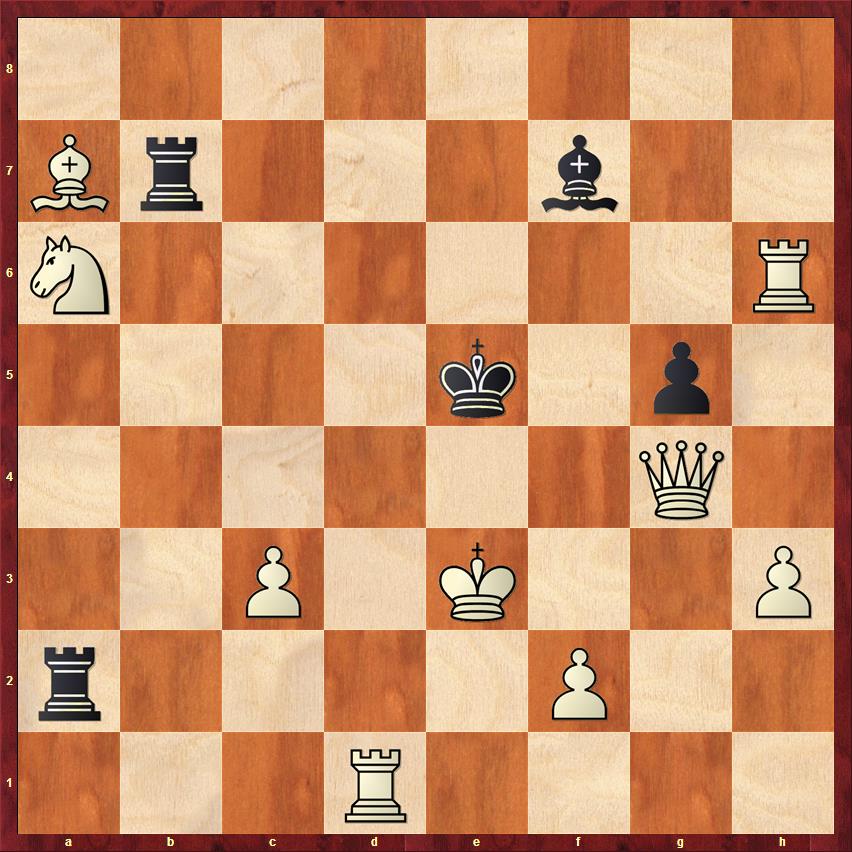
Now you might think that white can just retrace his steps 3. Qd4+ Kf5 4. Qd3+ Ke5, thereby restoring the original position without the black pawn on g4. In problem-speak, when a piece leaves a square, and then later returns to that square by perfectly retracing its steps, it is referred to as a switchback.
The trouble, though, is that removing the g4 pawn has left f3 unguarded. So white has to work a bit harder. From the last diagram he can play the moves 3. Qg3+ Kf5 4. Rd5+ Bxd5:
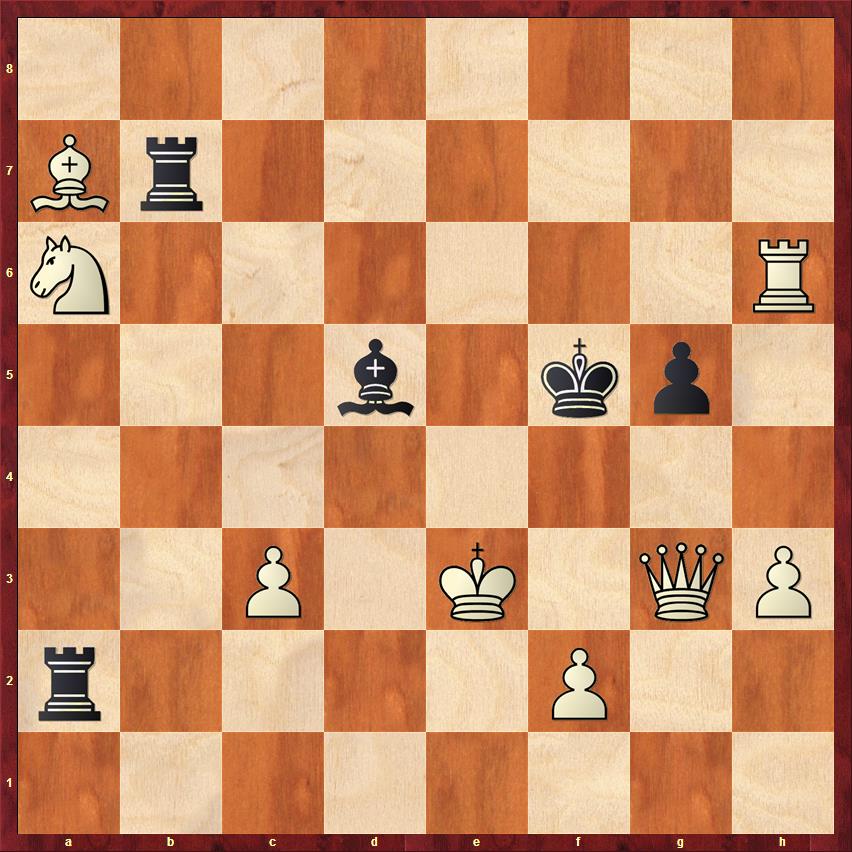
Now the black bishop is covering f3. That means white can retrace his steps after all: 5. Qg4+ Ke5 6. Qd4+ Kf5 7. Qd3+:
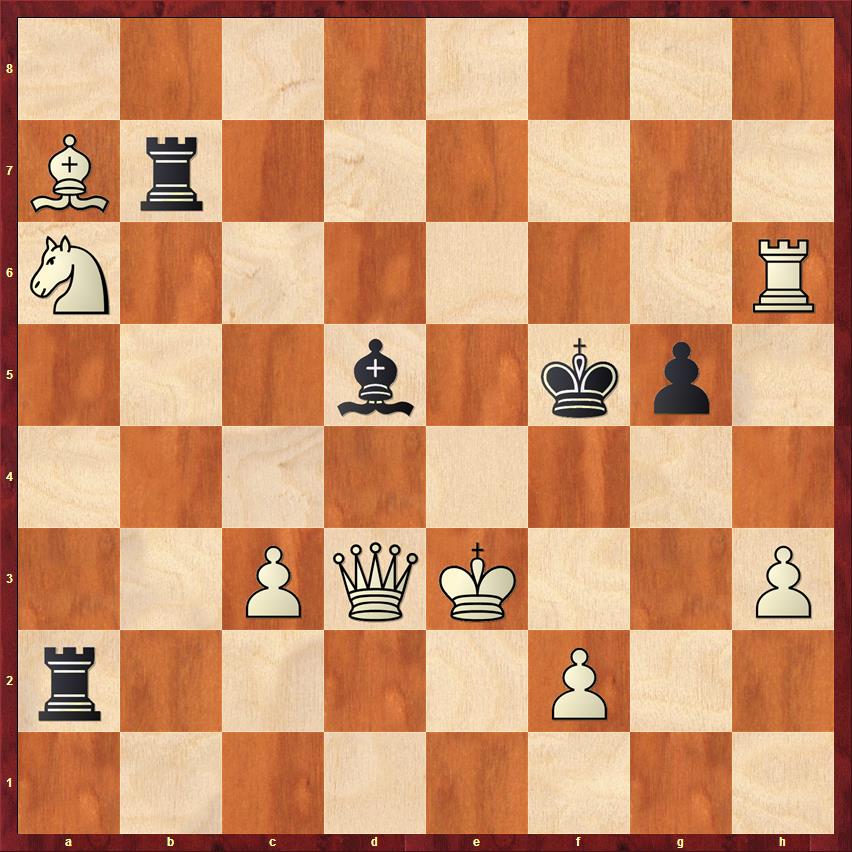
If black now plays 7. ... Ke5 then white gets what he wants! He plays 8. f4+, and black's only legal move is 8. ... gxf4 mate. Success!
Not so fast! Now that the bishop is on d5, black has acquired the possibility of 7. ... Be4. On the other hand, since this move covers d3, the white queen is no longer needed to block the white king on that square. That means white can play 8. Qd7+:
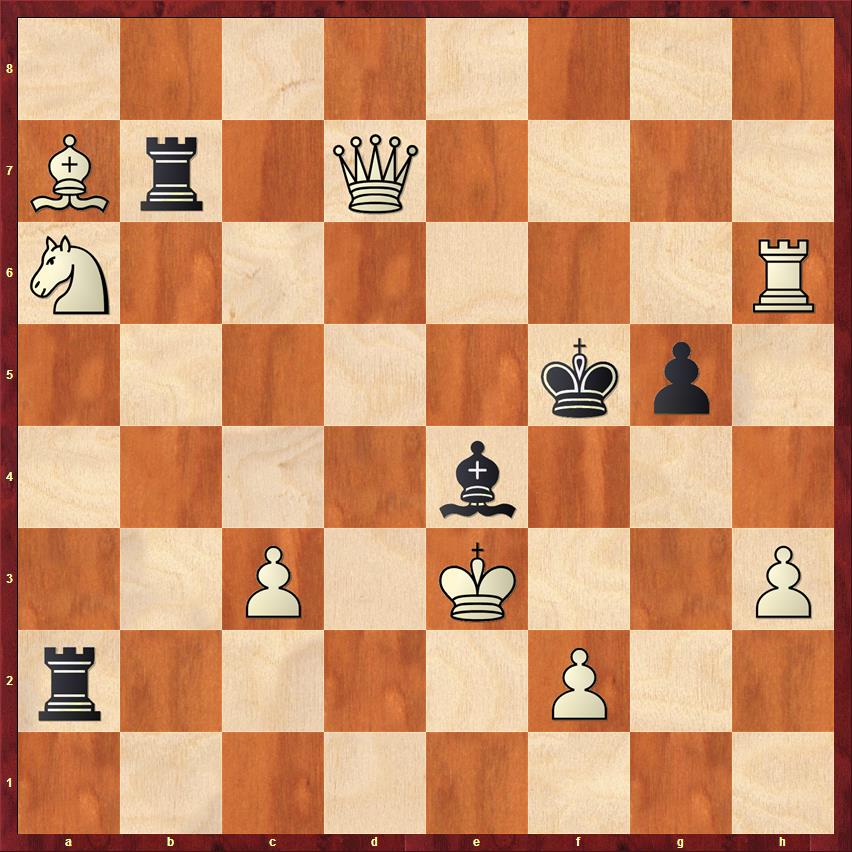
Now 8. ... Ke5 would once again allow 9. f4+ and white gets what he wants.
But you probably see why that's nonsense. The black rook on b7 will just capture the white queen when it arrives on d7, and so much for that. This means that before we can put this whole idea into practice, we need to neutralize that defense by the black rook.
Is that really so hard? Going all the way back to the starting position, why can't white just play 1. Bb8+. After 1. ... Rxb8:
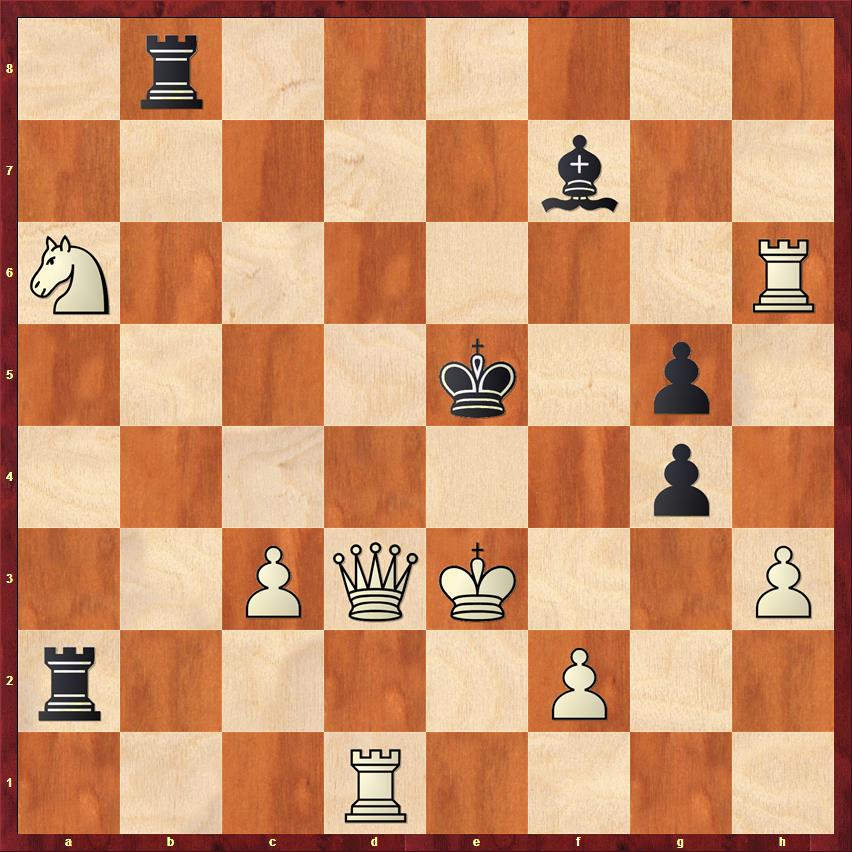
the black rook has been successfully decoyed, and white can get back to business.
Alas, this doesn't work. This isn't checkers, you see, which means that black is not forced to capture. After 1. Bb8+ he replies with 1. ... Rc7:

White is now out of luck. Drat!
But white isn't yet out of ideas! What is needed is a preliminary decoy of the black rook. That is, we need to lure the black rook to a square from which Bb8+ will force a capture on b8. That can be done via 1. Bd4+ Kd5 2. Nb4+:

and after the additional moves 2. ... Rxb4 3. Ba7+
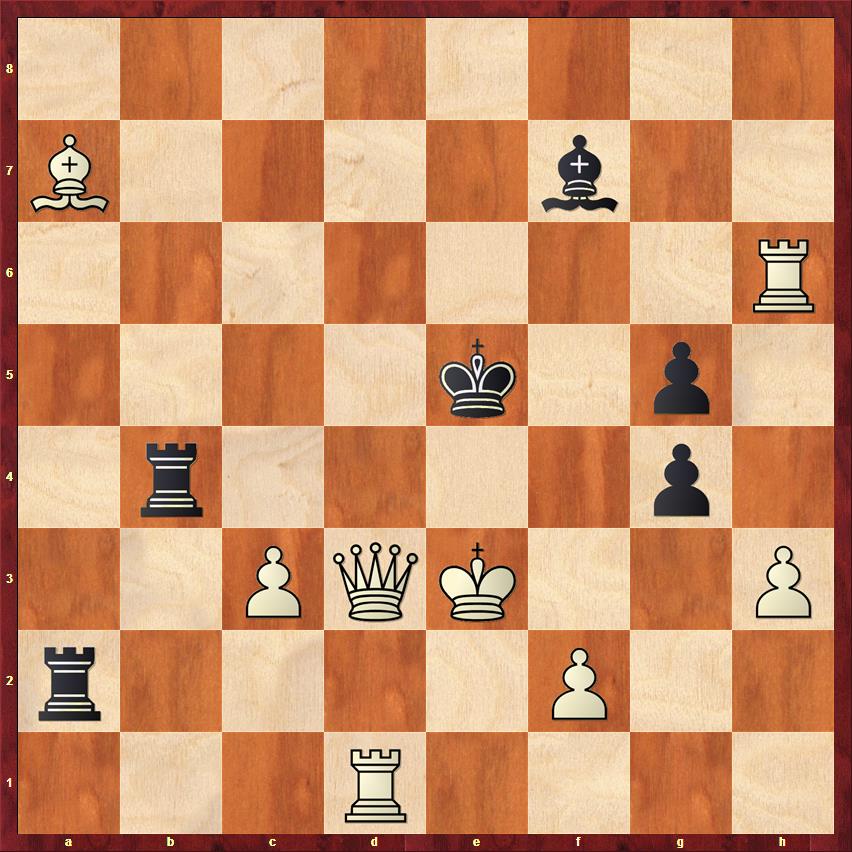
we have a switchback by the white bishop to complement the queen switchback in the main play.
But now all the ingredients are in place. The solution runs: 1. Bd4+ Kd5 2. Nb4+ Rxb4 , completing the first foreplan. The black rook has been decoyed to b4.
3. Ba7+ Ke5 4. Bb8+ Rxb8. That concludes the second foreplan. The black rook can no longer bother the white queen when she arrives on d7.
5. Qd4+ Kf5 6. Qxg4+ Ke5 7. Qg3+ Kf5 8. Rd5+ Bxd5 9. Qg4+ Ke5 10. Qd4+ Kf5 11. Qd3+ and the third foreplan is complete. The original position has been restored without the black pawn on g4, and f3 is covered by the black bishop.
The finale is 11. ... Be4 12. Qd7+:

and now 12. ... Ke5 13. f4+ gxf4 mate wraps things up.
By the way, if you were really paying attention you might have noticed that black had one additional possibility. After 1. Bd4+ Kd5 2. Nb4+ Rxb4 3. Ba7+, black can play 3. ... Rd4. Indeed. But now white wraps things up easily with 4. c4+ Ke5 5. Bb8+ Rd6 6. Qd4+ Kf5 7. Qf4 gxf4 mate. So no joy for black there, either!
- Log in to post comments

Whew! Congrats on this one! Gets kind of head-spinning, these self-mates. Hope it wins a prize; I am thinking you must deserve one for what must have been some very serious effort.
Yeah, this one definitely took a while. The funny thing is, for a long time I overlooked the Rc7 defense for black. I thought that black was just forced to take on b8, and the point of the problem was going to be that white had to play a foreplan whose point did not become clear until the twelfth move of a thirteen move problem. When I noticed Rc7, I realized I needed to add some way of dealing with it. That actually enriched the problem!